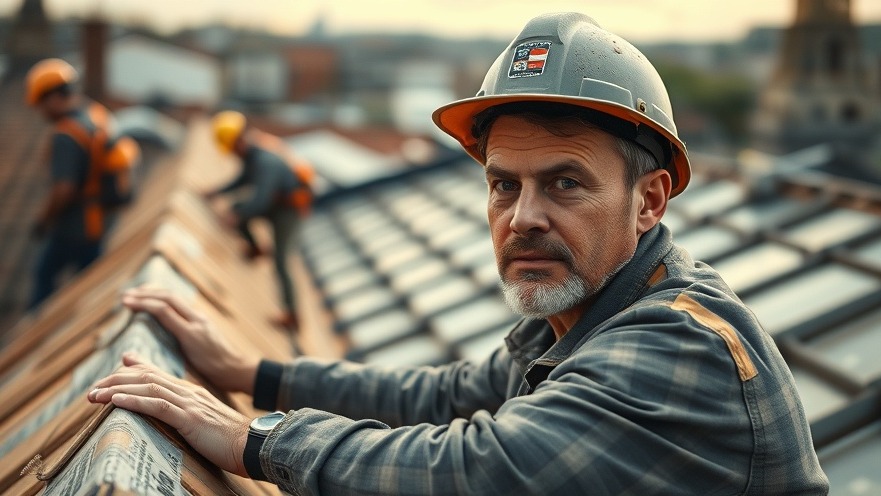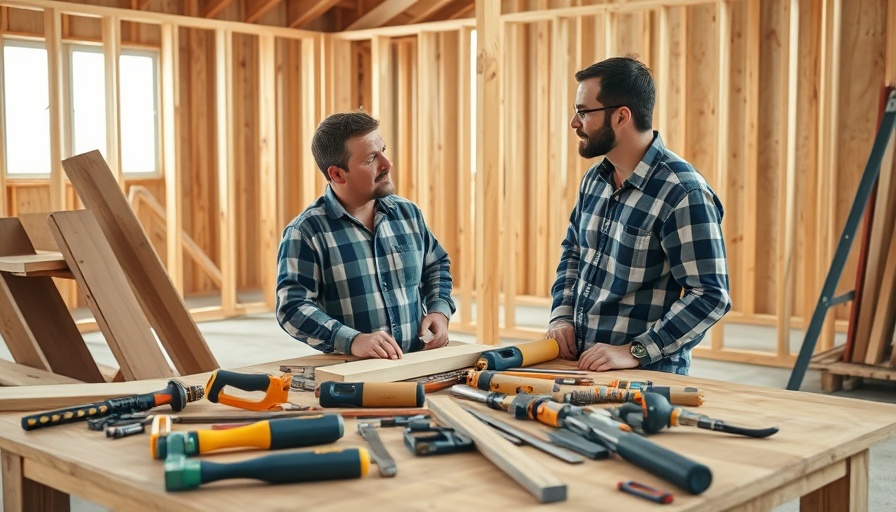
Understanding the Importance of Proper Roof Flashing
Roof flashing is a critical element in home construction and maintenance, especially in areas where different rooflines meet. In the video Waterproof Connecting Rooflines | This Old House, experts delve into the complexities of sealing around these junctions, emphasizing the significance of employing proper techniques to prevent water intrusion. A well-executed flashing can greatly extend the lifespan of your roof and the integrity of your home.
Why Roof Connections Matter: A Homeowner's Perspective
As a homeowner, understanding the risks associated with improper roof connections is vital to maintaining your property. Roof intersections can be vulnerable points where water enters, leading to leaks, mold, and structural damage. The video highlights techniques such as using a self-sealing membrane and step flashing to ensure that water cannot breach these areas, thus protecting your investment and peace of mind.
Highlights from the Video: Best Practices for Flashing
The video presents several best practices for flashing that any DIY enthusiast can implement. Key steps include:
Using Self-Sealing Membranes: A self-sealing membrane applies directly to the roofing sheathing and forms a watertight barrier, which is critical when nails puncture the surface.
The Role of Step Flashing: Proper installation of step flashing ensures water is diverted away from roof valleys and walls. Experts stress the importance of overlapping these materials to provide a seamless barrier against potential leaks.
Choose the Right Materials: Employing high-quality materials, such as 16-gauge copper with zinc coating, ensures durability and resistance to wear over time.
Future Trends in Roofing: Waterproof Innovations
The future of roofing looks brighter with ongoing innovations in waterproofing technologies. Homeowners should stay informed about available advancements, such as advanced membrane systems and coatings that enhance water resistance and longevity. As climate change brings more intense weather patterns, ensuring your roof is tightly sealed becomes more crucial than ever.
Actionable Insights for Homeowners
For homeowners contemplating roofing projects, here are some actionable insights:
Before starting any roofing work, make sure to assess the junctions of your rooflines carefully. Consider consulting with professionals if you’re unsure about the state of your current flashing.
If you're attempting a DIY repair, invest in high-quality materials and ensure that you follow the best practices discussed in the video. Good preparation can save you from costly future repairs.
Stay updated on roofing technology by following reliable home improvement resources and networks to enhance your knowledge further.
In summary, proper flashing techniques are key to ensuring that your home's roof remains water-tight and protective against leaks. Investing in this knowledge will undoubtedly help in safeguarding your home’s structure and enhancing its overall value. Remember, a little preparedness goes a long way in home maintenance.
Don't forget to check out more resources to improve your home, whether through self-help videos or expert consultations, and keep your living space secure and appealing!
 Add Row
Add Row  Add
Add 




Write A Comment